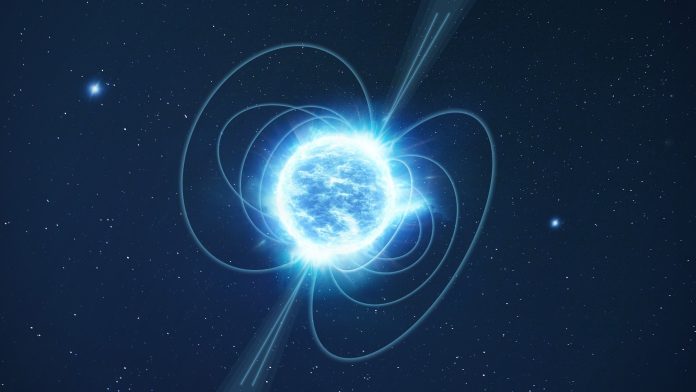
Primordial black holes are thought to have formed early in the evolution of the universe.
None have been discovered yet but if they do exist and they may be plentiful, drifting almost invisibly through the cosmos, then they might account for dark matter.
One possible way to search for them is to see the results of their meals and a bizarre new theory suggests low mass black holes could be captured by neutron stars and become trapped inside, devouring them from within.
If these strange objects existed then it would make neutron stars less common in locations where black holes would proliferate as observed around Galactic centre.
Black holes are fascinating objects. Some are formed when supermassive stars die, others (which are theoretical only at this stage) may have formed out of regions of higher density when the universe was young.
It is possible they may account for a portion of, or maybe even all of the dark matter that makes up about 27% of the mass-energy content of the universe.
Their discovery would certainly help to explain some of the mysteries surrounding dark matter but would also help to explain other observations to; microlensing events, correlations in the X-ray and cosmic infrared background fluctuations and mass, spin and coalescence rates for black holes found by LIGO/Virgo.
In the paper published by Roberto Caiozzo, Gianfranco Bertone and Florian Kuhnel they explore the abundance of sub-stellar mass primordial black holes.
They use modern analysis techniques and explore the possibility that the primordial black holes could be captured by neutron stars and sink to its core.
Previous studies into this possibility have been undertaken most notably and most recently by Y. G ?enolini, P. D. Serpico, and P. Tinyakov in their paper “Revisiting primordial black hole capture into neutron stars.
The attention of Caiozzo and team focussed upon the innermost parsec of the Milky Way galaxy, the Galactic centre.
They chose this location to study neutron star captured primordial black holes due to the expected high density of dark matter and the predicted population of pulsars. I should add here that most neutron stars are seen as pulsars.
Pulsars are just neutron stars that rotate fast and we see them as producing pulses of radiation at short intervals often between milliseconds and seconds.
It’s thought they should exist in their thousands however to date, hardly any have been found within the innermost region. It’s not known why there are so few however the team postulate that it may be due to disruption by the black holes.
Millisecond pulsars (those who spin rate is among the highest) would be an excellent choice for study. They are easy to locate and due to spectroscopic observations, they are thought to exist in large populations in the Galactic bulge, likely also close to Galactic centre.
Previous predictions suggest there may be 67 long lived neutron star – X-ray binaries in the innermost region of the centre and these have been shown to be the progenitor of millisecond pulsars. It is therefore reasonable to assume a good population in the Galactic centre.
The rate of capture of primordial black holes by neutron stars in the Galactic centre is the goal of the paper with existing calculations being revisited to produce a more realistic forecast.
The team goes one step further though and look at the likelihood of the collapse of a neutron star given the disruption of a primordial black hole.
The team find however that, having improved all previous models, that the capture of the primordial black holes cannot explain why there are so few missing pulsars / neutron stars around Galactic centre.
The disruption of neutron stars and pulsars is simply not likely to occur within their projected lifetime.
Written by Mark Thompson/Universe Today.



